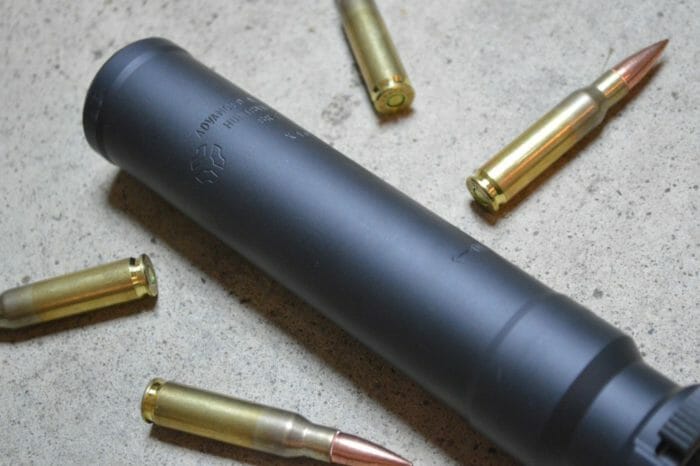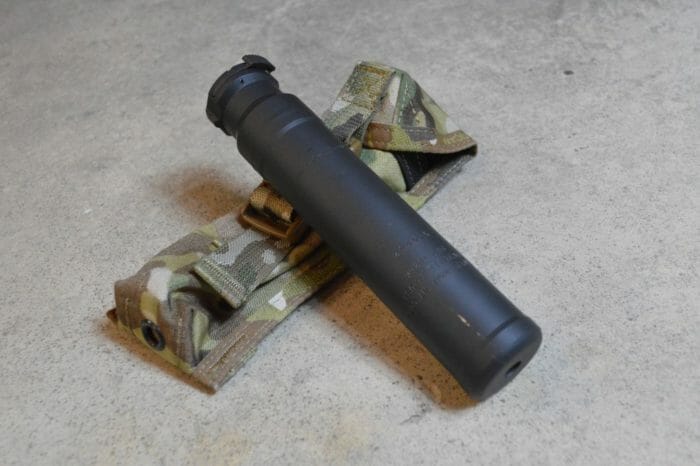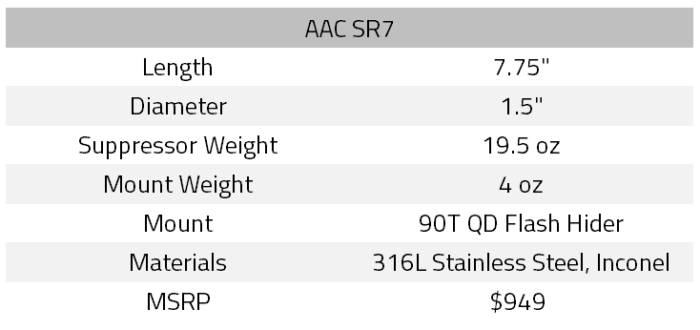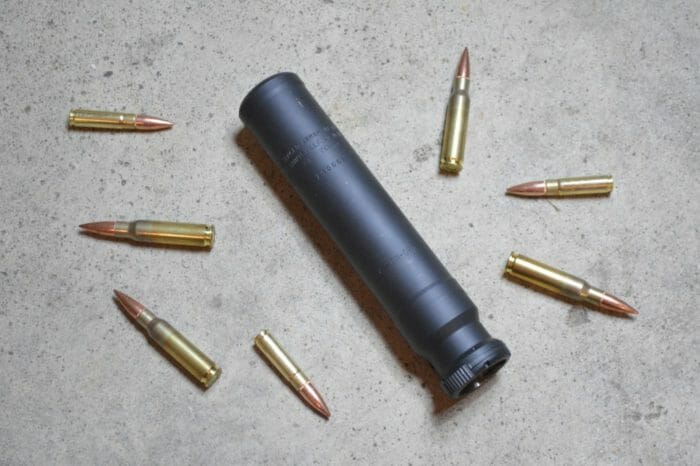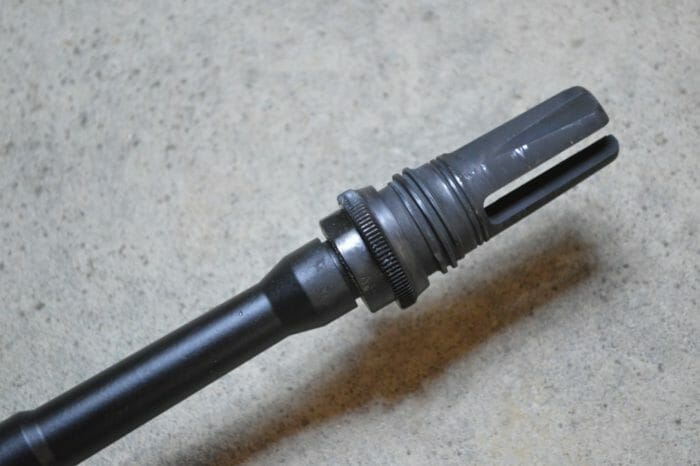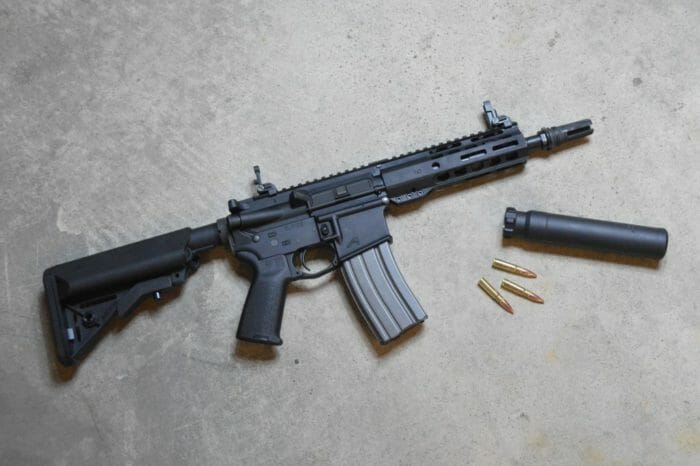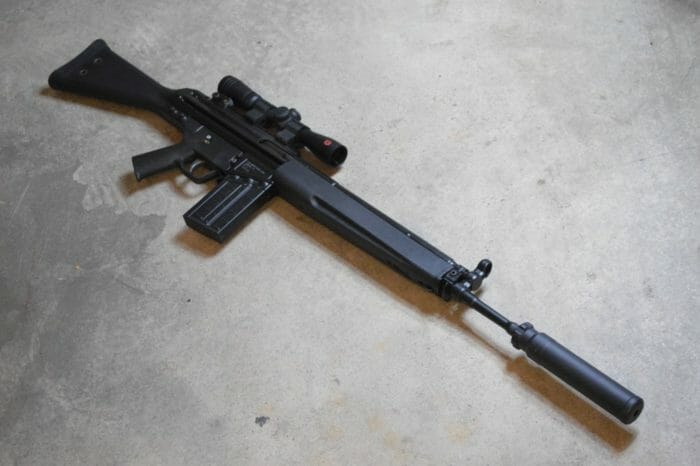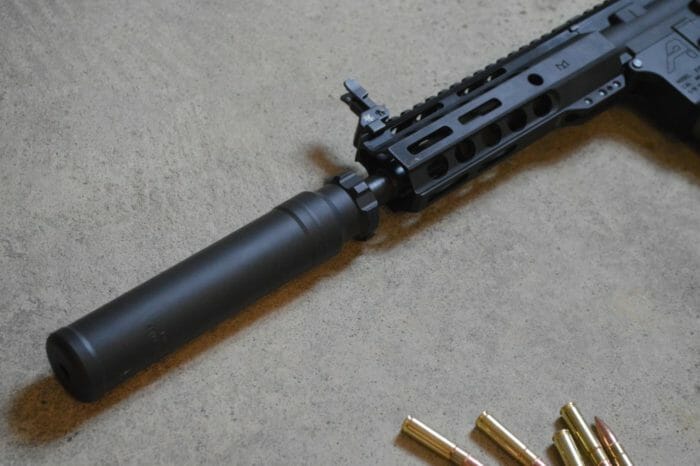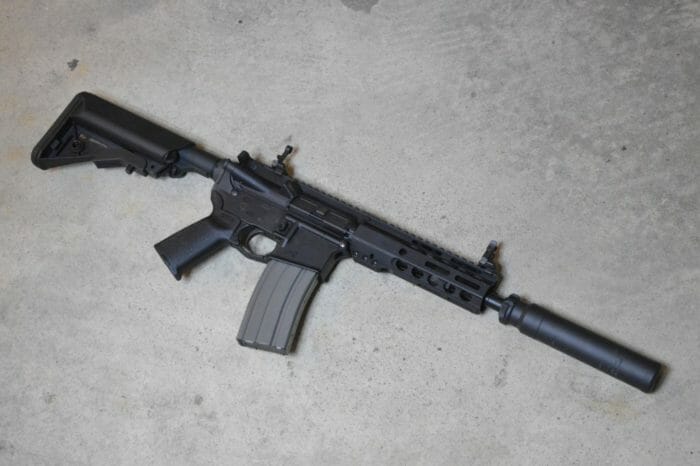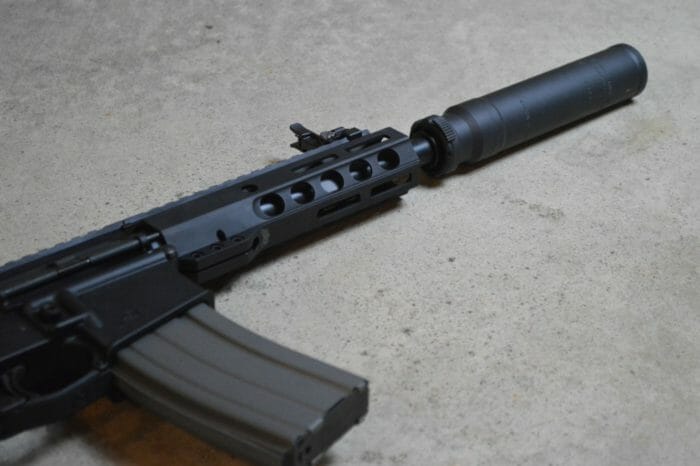Silencer Shop Authority: AAC SR7 Review
A few months back, I received a box from my friends down at Silencer Shop that included the AAC SR7 and AAC’s Halcyon .22 suppressor that I reviewed last month. The SR7, a .30 caliber suppressor that hasn’t really received much press since its 2014 release. Since we’ve already looked at the Halcyon, today, we will closely examine the SR7.
Size & Weight
At 7-3/4” long, the AAC SR7 is essentially an average size .30 caliber silencer. It’s right in the middle of the spectrum, making it a versatile choice for a variety of applications. Also, like most other rifle suppressors, the SR7 is 1.5” in diameter.
Though it may be mid-range in terms of overall size, the AAC SR7 is a relatively hefty silencer. According to my scale, the silencer itself weighs 19.5 ounces. The mounts each weigh around 4 ounces. That leaves the total package at over 23 ounces – far from what many would consider lightweight.
Materials & Design
Back in 2014 – when we were first introduced to the AAC SR7 – the market demanded insanely durable suppressors. Everything, from SilencerCo’s Specwar and Saker lines to AAC’s own 762-SDN-6, was built like a brick… outhouse. The SR7 was (and still is) no exception. The outer tube is made of 316L stainless steel. If you really want to pick nits, it’s just a hair less durable than 17-4 stainless that tends to be more popular these days. That really doesn’t matter at all to anyone. Inside the tube, all of the baffles are Inconel nickel alloy, which is one of the toughest materials used in suppressors. While the SR7 is relatively heavy, you can beat the hell out of it. It’s even rated all the way down to 10” barrels with .308. Lastly, the tube is finished off in high-temperature Cerakote.
One of the most common complaints slung at AAC suppressors is that their 51-tooth mounting system wobbles. Well, it usually doesn’t wobble per se, but it allows for some rotational movement that can be a little disconcerting for some users and can also negatively impact accuracy. Other users have had to send their silencers back to AAC to have worn latches replaced. After repeated installation and removal, the ratcheting locking arm on the 51T suppressors is known to wear out. Having used the 51T system myself, I think most of these complaints are overblown, but they aren’t without merit. There certainly are better mounts out there.

To address the 51T pitfalls, AAC introduced the 90T system with the advent of the SR5 and SR7 suppressors. It’s functionally similar to the 51T in that it features ratcheting, active retention, and coarse threads to allow for quick attachment and detachment. Aside from the threads and ratcheting teeth, the 90T mounts also sport a new, tapered surface just in front of the teeth that helps to stabilize the silencer better and ensures proper bore alignment. Whether or not the 90T system is susceptible to worn latches remains to be seen. I suspect it is, but all things considered, the mounts are better than their predecessors—the SR7 ships with a single 90T flash hider sporting standard 5/8-24 threads.
Inside the SR7 are nine conical, or M-style, baffles. While all are cone-shaped, they aren’t all precisely the same. The blast baffle is parabolically-shaped and is machined out of Inconel billet. The rest of the baffles are Inconel stampings machined to size and with several flutes flaring out from the bore aperture. Interestingly, AAC uses the same stampings for both the SR7 and its little brother, the SR5. They simply cut the SR7 baffles a little lower on the cone to allow for a larger bore. This has an interesting side-effect. Because the SR7’s distal baffles are cut below the beginning of the flutes, each has a bore that roughly resembles an octagon. It’s an odd, if not alarming, sight to see when you first look inside the silencer.
Range Report
If you look for feedback on the SR7, you’ll likely find that many consider it a loud suppressor. This is mostly because past testing from both Military Arms Channel and Silencer Shop placed it at over 140 dB near the muzzle with both 5.56mm and .308 hosts. Those results certainly do leave the SR7 as one of the loudest .30 caliber offerings.
Without access to a proper meter, I’m in no position to refute the stats published by MAC and Silencer Shop. However, I can say with certainty that the SR7 fares far better at the ear. With the silencer mounted to my PTR-91, I pulled off my protective earmuffs and fired three rounds. What I found was that the combination produced a far more pleasing result than I expected. I still experienced some ringing – indicating the pairing was not hearing safe – but it was very, very minimal. The at-ear performance of the SR7 likely hovered around 140 to 142 dB. By all means, keep the muffs or plugs in place, as the SR7 isn’t going to be sub-140 dB “hearing safe” on really any semi-automatic host with supersonic ammunition, but it performs about as well as (or maybe slightly better than) top .30 caliber silencers in this respect.
Flipping AAC’s suppressor over to my .300 Blackout, short-barreled AR-15 was much friendlier to my ears. Here, it was easily hearing safe. While not quite on par with the best .30 caliber suppressors for .300 Blackout (see the SIG SRD762 and Q’s Full Nelson), the SR7 fared reasonably well, reminding me of Q’s Half Nelson as far as performance is concerned.
Though I’ve taken steps to ensure that my PTR-91 runs reliably with a suppressor, I was surprised to find that the SR7 led to a significant increase in case velocity upon ejection. Roller-delayed guns are well known for throwing cases several yards, but this was something else. My spent casings hammered the aluminum roof of the shooting line hard enough that the impacts could be heard through my ear muffs. At the same time, though, I didn’t feel like the silencer’s at-ear performance suffered in any meaningful way. Still, I’ll admit that the flying cases left me wondering if I might have been hitting other shooters.
Mounting any suppressor to any rifle is going to affect your point of impact (POI). The weight – and to some degree, the design – of the silencer and mount will change where your rounds land, relative to their unsuppressed destination. To keep comparisons consistent across all of my .30 caliber suppressor reviews, I always use my PTR-91 for POI shift measurement. It seems to be particularly sensitive to use with a suppressor, so I like to see how different silencers affect it. With the SR7 mounted up, my PTR’s POI sat around 3.5 minutes of arc (MOA) lower and 1 MOA right of my unsuppressed groups.
Conclusion
There are a few things about the SR7 that I really like. First, the 90T mounts are unquestionably better than the 51T system (even if the flash hider is plagued by tuning fork-like ringing after every shot). They present no rotational wobble, lock up nicely, and offer a taper for even more security. AAC absolutely needs to get more 90T suppressors to market. Second, the silencers sounds a whole lot better at ear than expected. It was very nearly hearing safe at the ear on my PTR-91, which is not something many .30 caliber suppressors can claim. Finally, the SR7 is extremely durable. Rated down to 10” barrels with .308, it will work on almost any reasonable host that you can throw at it.
However, the SR7 also has some significant weaknesses that need to be addressed. It truly isn’t the quietest .30 caliber silencer on the market, and there are at least a handful of options with better muzzle performance and similar at ear reduction. The SR7 is also relatively heavy, at least for a modern silencer in this caliber. With a mount, the SR7 tips scale at over 23 ounces. Two or three years ago, that would have been relatively typical, but I don’t see many current buyers seeking out silencerss this heavy. These factors bring me to another point. AAC has some room for product consolidation. The 762-SD, 762-SDN-6, and SR7 are all beefy .30 caliber suppressors. The difference in length/weight between the 762-SD and its shorter brothers is significant, but there isn’t a whole lot of reason for someone to drop the extra coin on the SR7 over the SDN-6, especially because the latter is a better overall performer.
If you’re in the market for a durable .30 caliber suppressor with a superb mounting system, the AAC SR7 can be found at Silencer Shop for just over $700.
An information security professional by day and gun blogger by night, Nathan started his firearms journey at 16 years old as a collector of C&R rifles. These days, you’re likely to find him shooting something a bit more modern – and usually equipped with a suppressor – but his passion for firearms with military heritage has never waned. Over the last five years, Nathan has written about a variety of firearms topics, including Second Amendment politics and gun and gear reviews. When he isn’t shooting or writing, Nathan nerds out over computers, 3D printing, and Star Wars.

